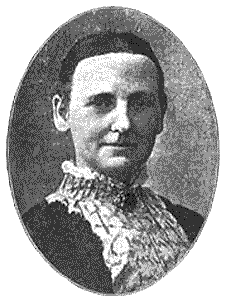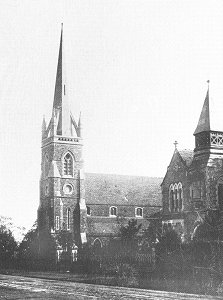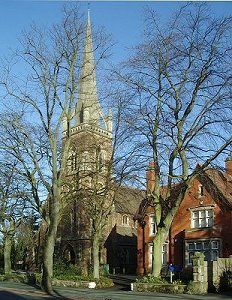THE REVEREND AND MRS O. F. WALTONAND AN ACCOUNT OF DAISY BANKby Frank Sharman
The Rev. Octavius Frank Walton first appears as the curate of St. Stephen’s, Spring Street, Hull. He married his vicar’s daughter, Amy Catherine Deck, in February 1875. Soon afterwards the Rev. Walton took up an appointment at a church on Mount Zion, Jerusalem where he and his wife stayed until 1879. They then moved back to this country, living for some years in Cally, Kirkcudbrightshire. In 1893 the couple were at St. Thomas’, York where the Rev. Walton had the living. In 1893 they moved to St. Jude’s Church on Tettenhall Road, Wolverhampton. In the 1911 census they are listed as living at 9 Tettenhall Road, but by 1913 they occupied St. Jude's vicarage. In January 1918 the Rev. Walton retired and returned to Leigh, Kent, and lived at Great Barnetts, where he became a noted amateur photographer. When Mr. Walton died, is not recorded; but Mrs. Walton lived until 1939, and died at Leigh.
Mrs. Walton’s writing career seems to have started in 1870 and she was in pretty regular production thereafter. Her works are nearly all directed at children, the early ones being, essentially, evangelical tracts, mainly about the importance of finding God, even in adverse circumstances. For, however comfortable Mrs. Walton’s own life may have been, she often writes about the working classes, and does so with sympathy. She seems to have met them, suggesting that in her role as the vicar’s wife she went far beyond the bounds of St. Jude’s to where the need was obviously greater. Her later novels are more akin to the standard children’s novel of the time and the religious element, though still present, is very much reduced. Her novel, which is of particular interest here, has but little preaching in it and is directed mainly at teenage girls, almost at the Peg’s Paper level. “The Lost Clue” was published by the Religious Tract Society in 1907, and it contains interesting descriptions of Daisy Bank which, at the time would have been seen as a remote part of Bilston, three stops down the railway line from Wolverhampton. |





